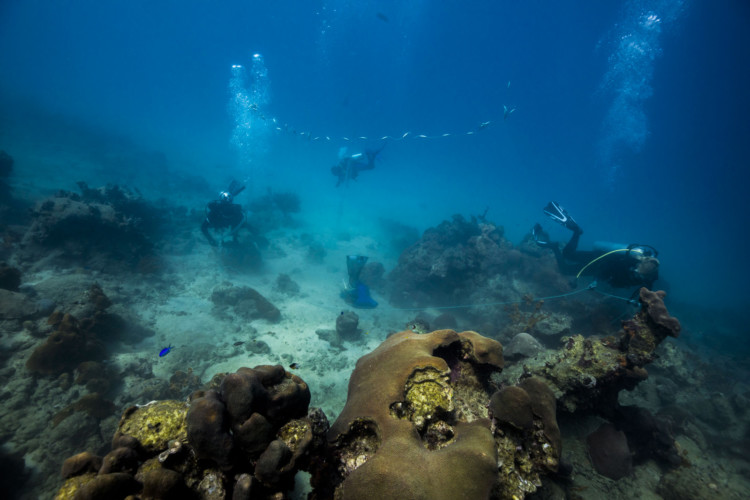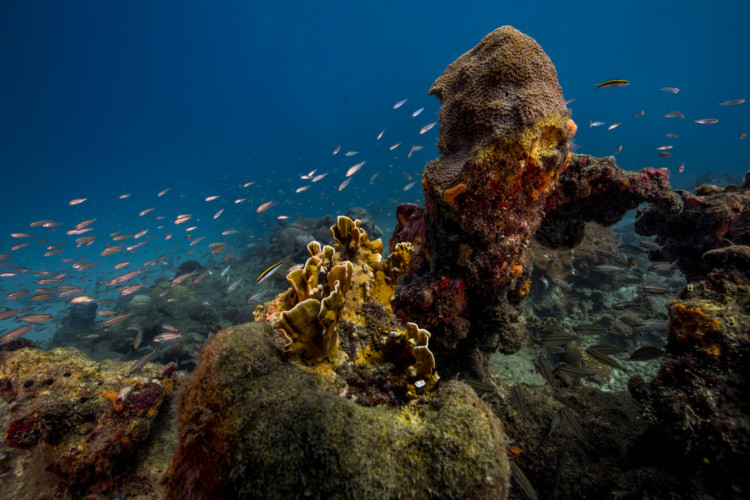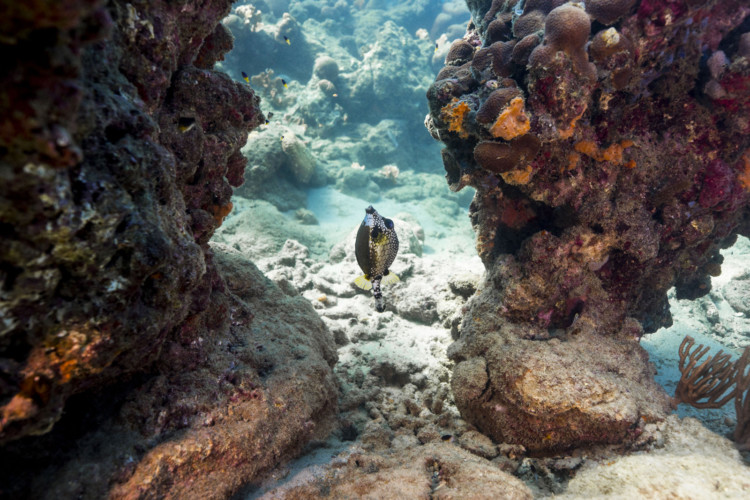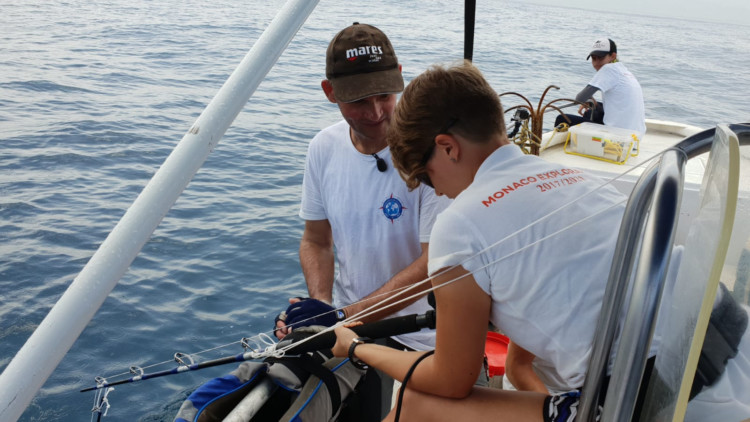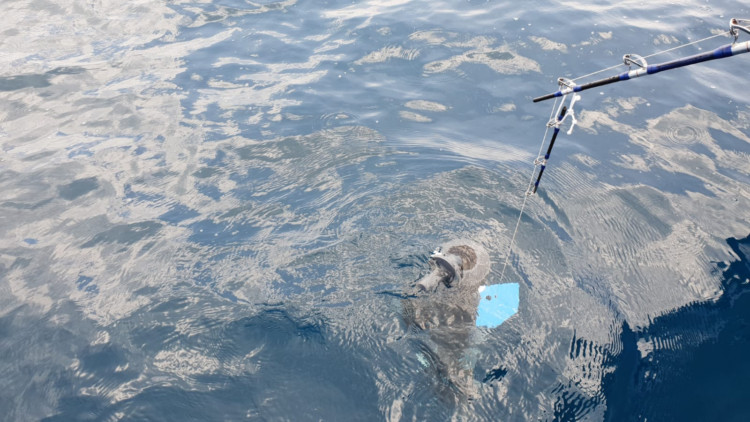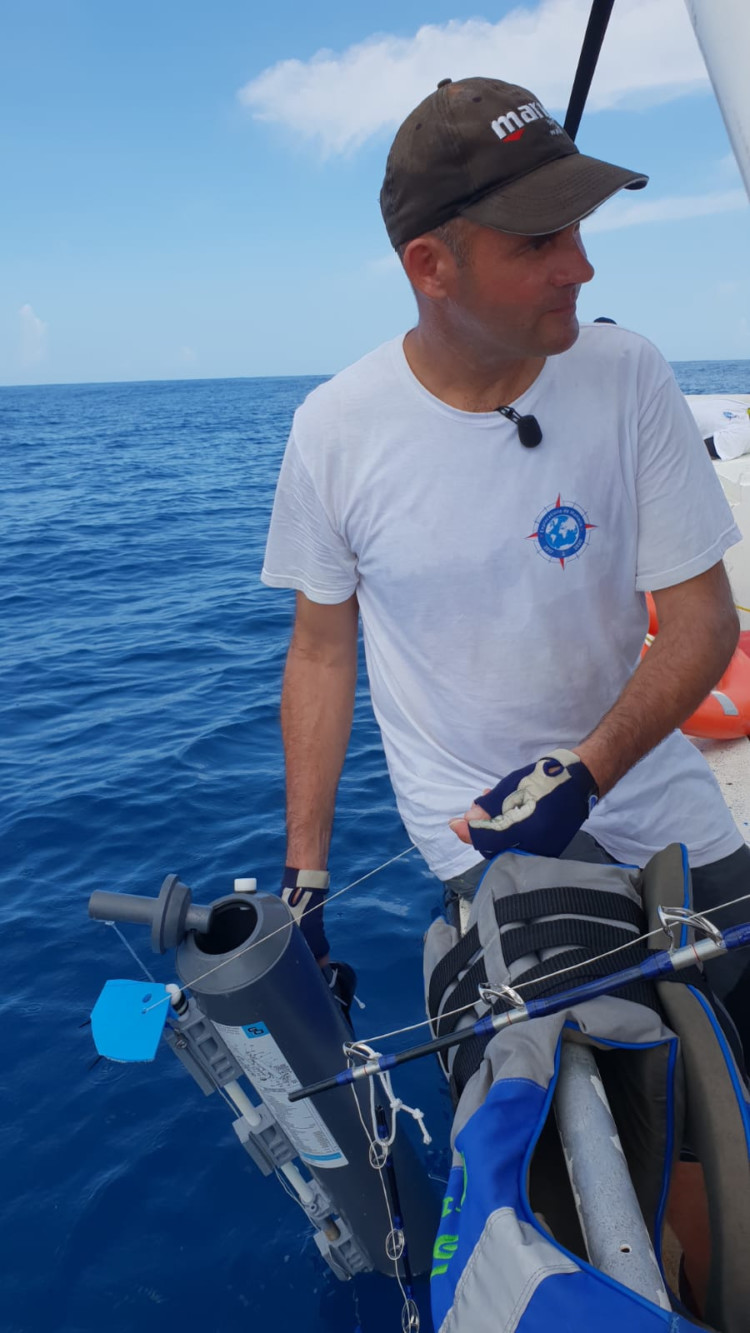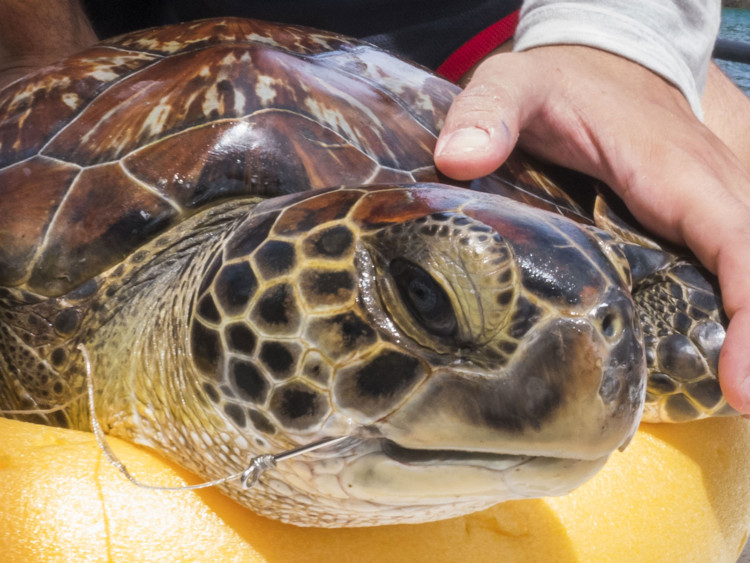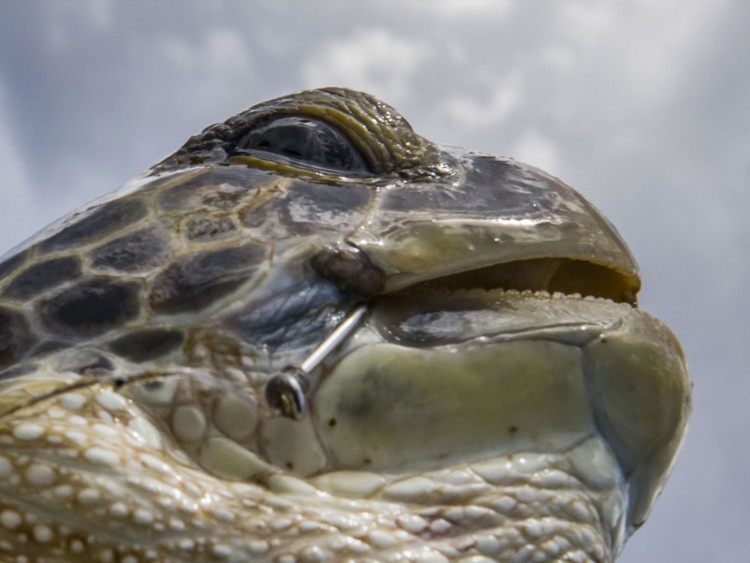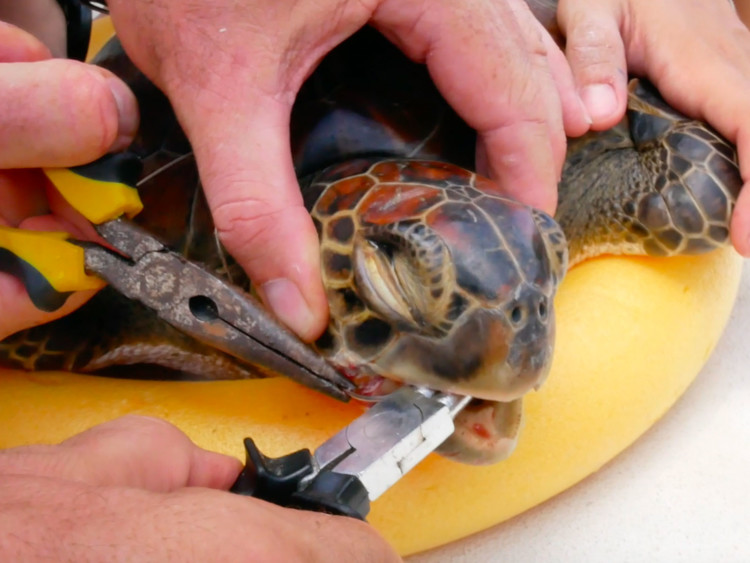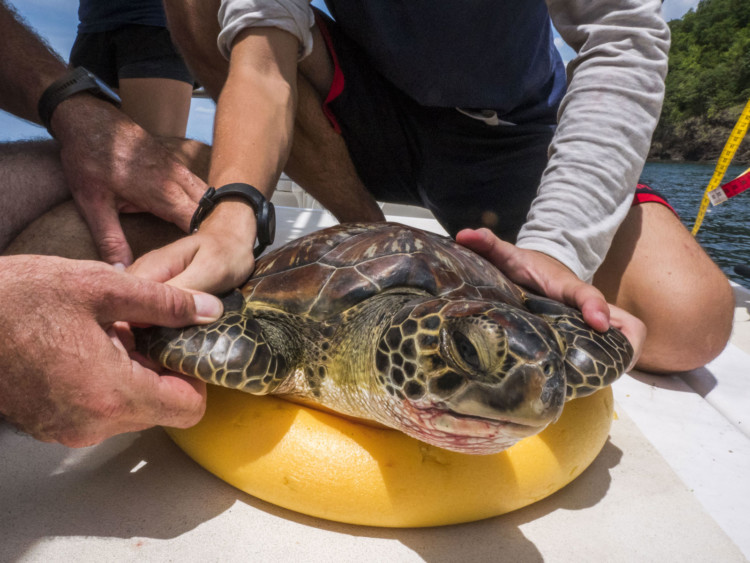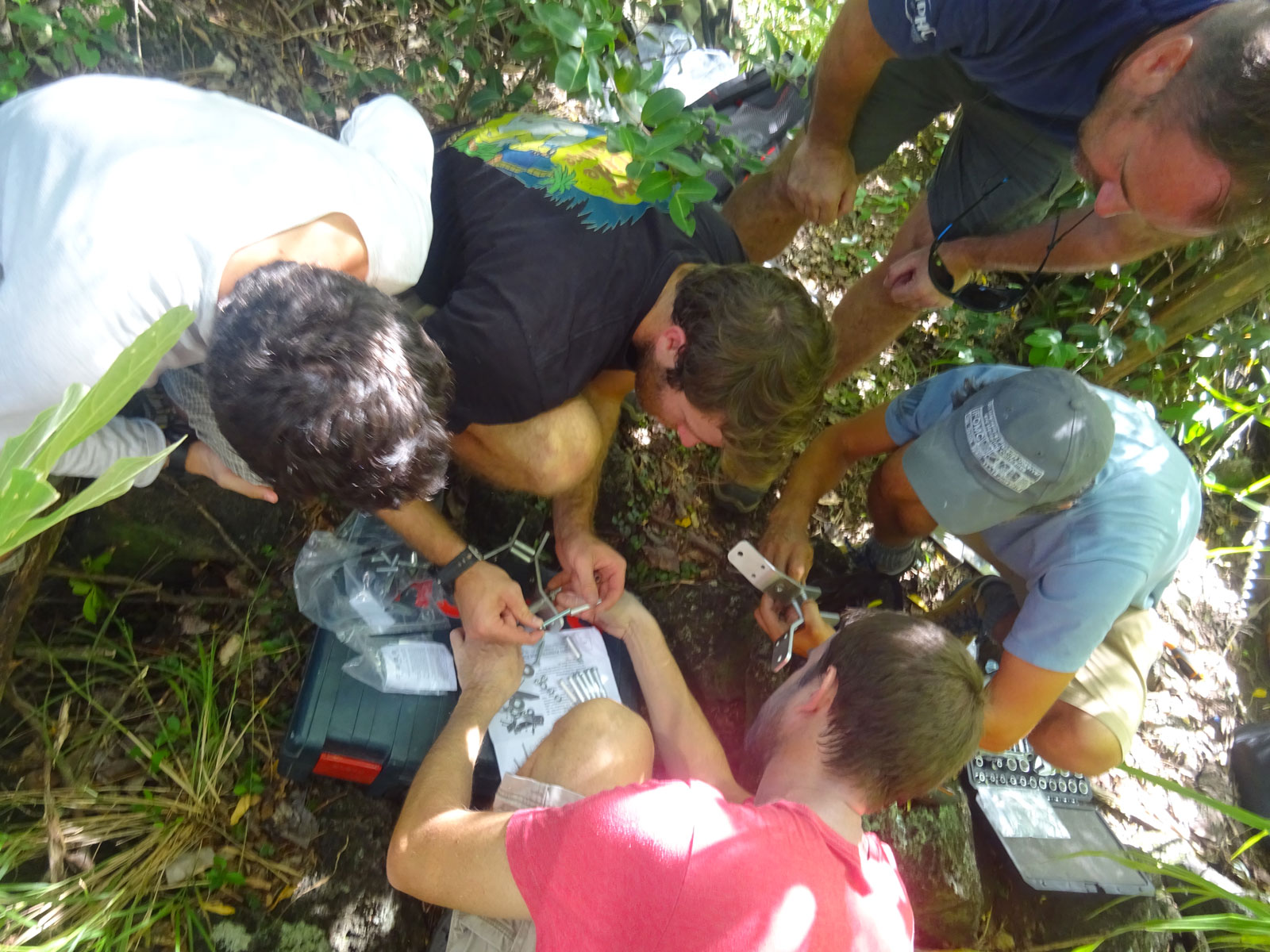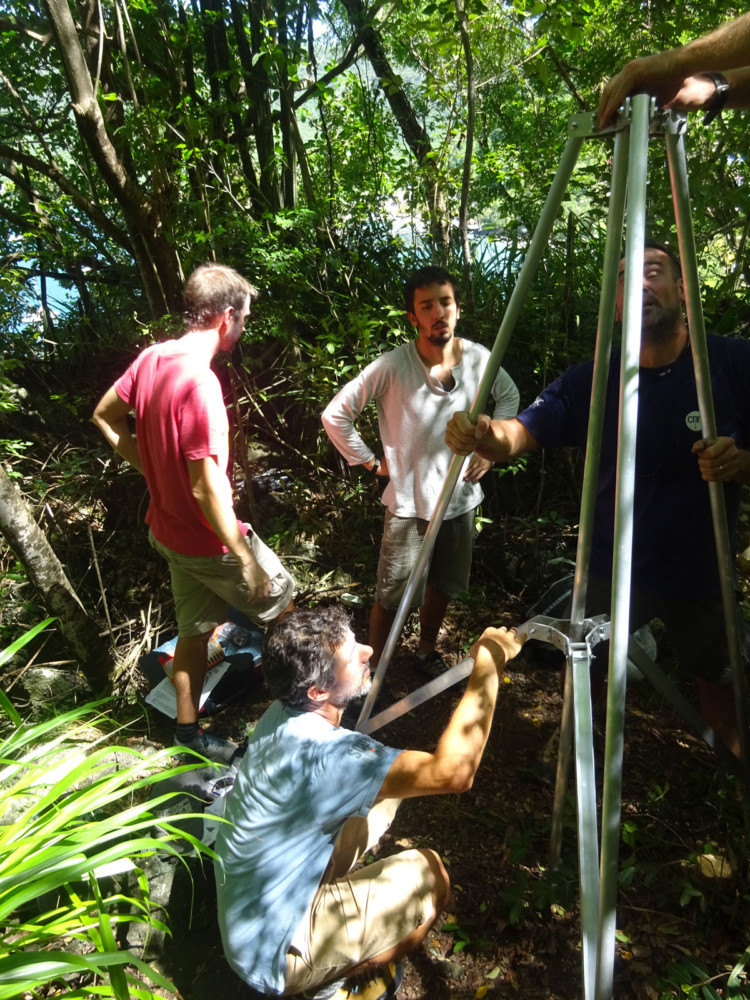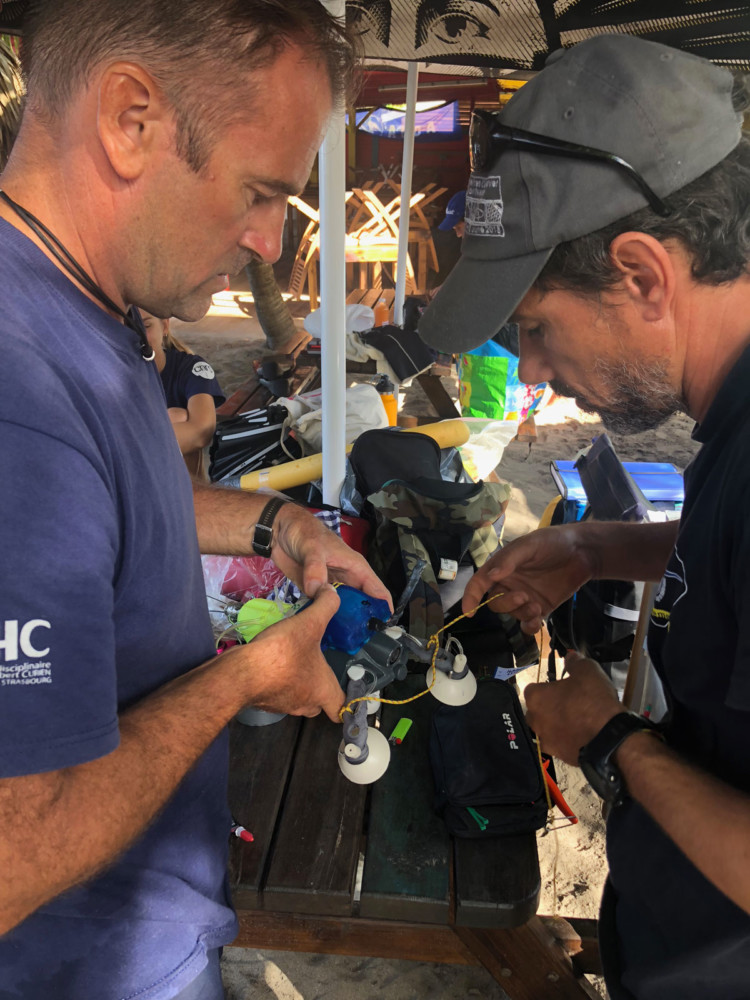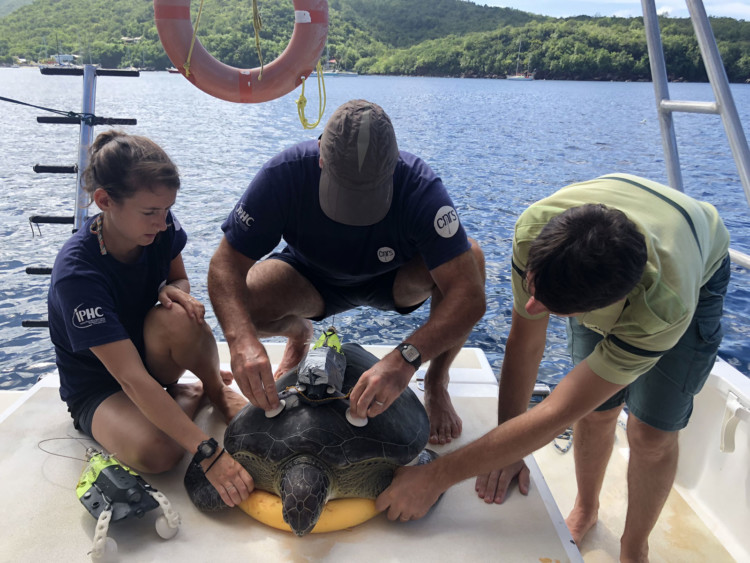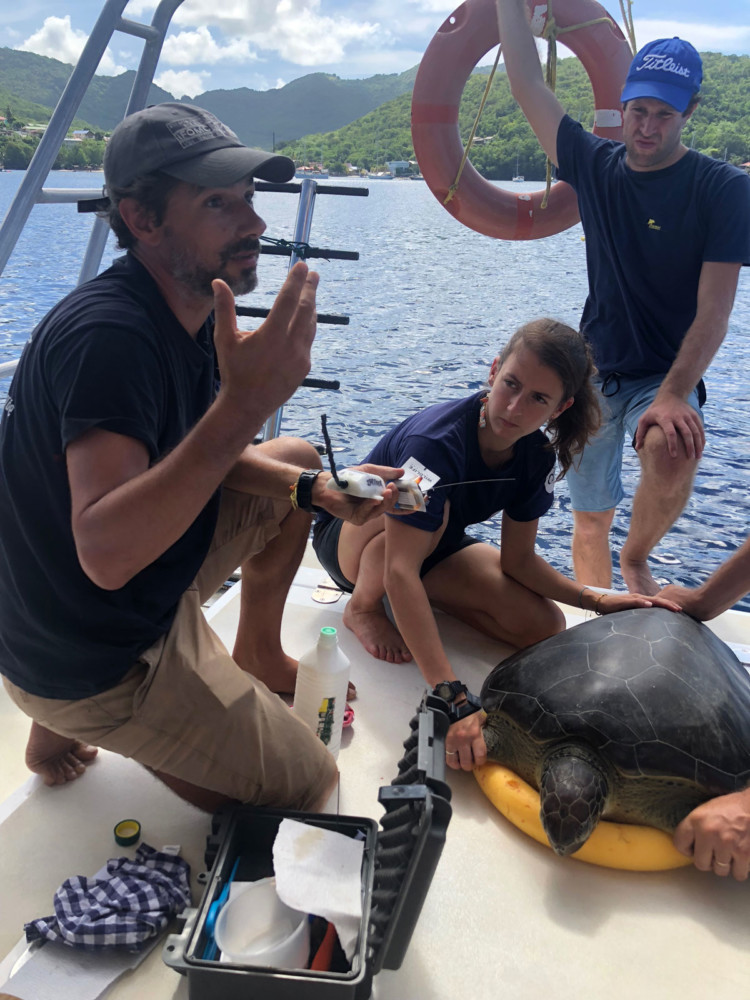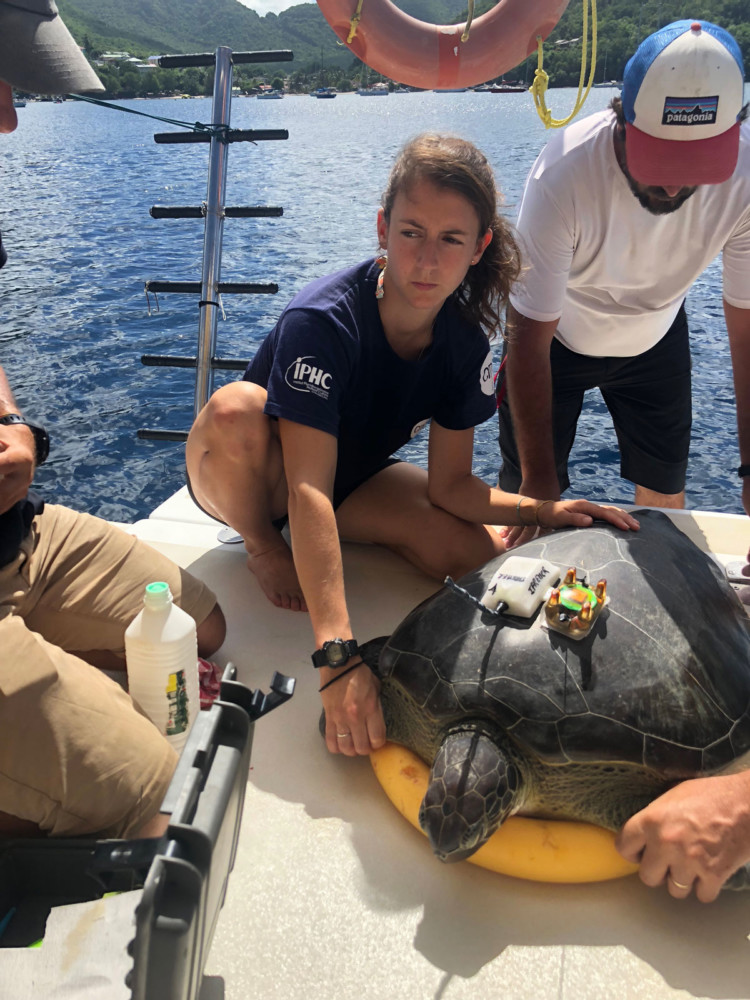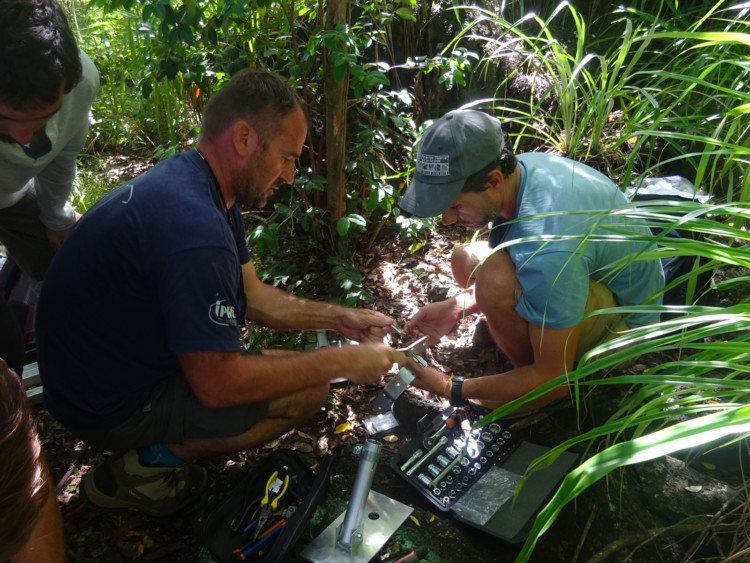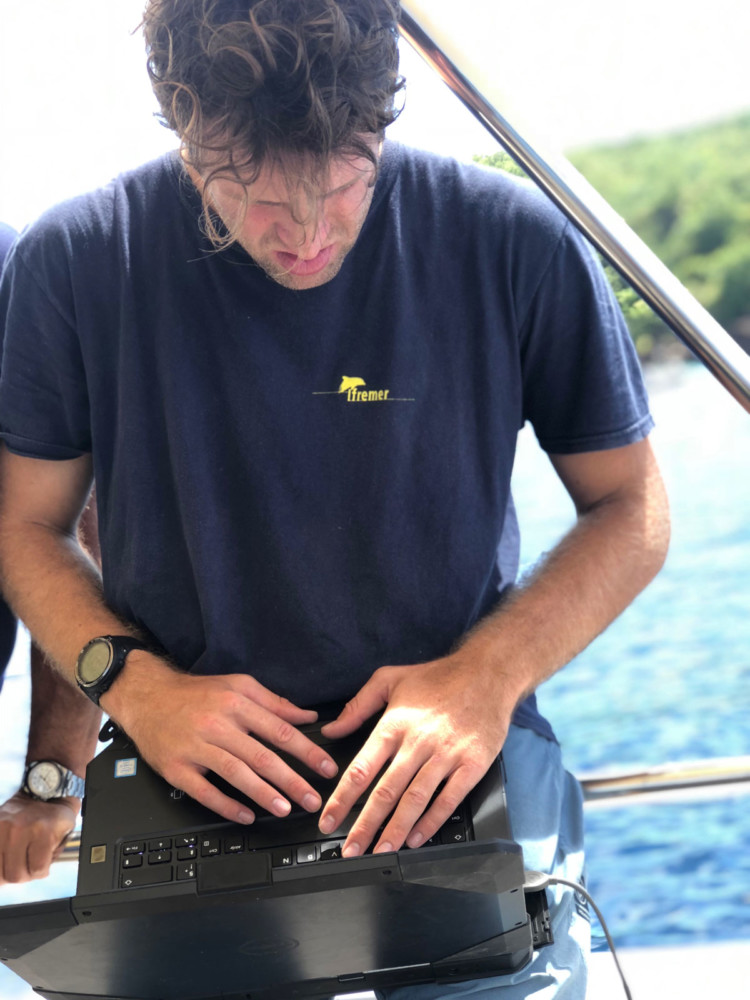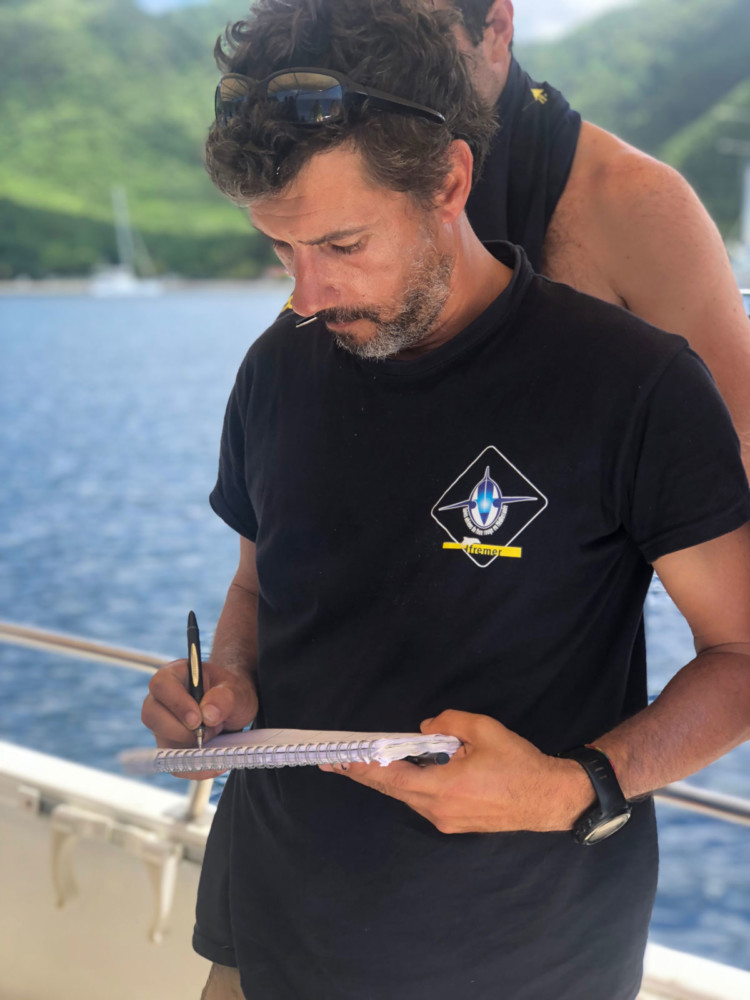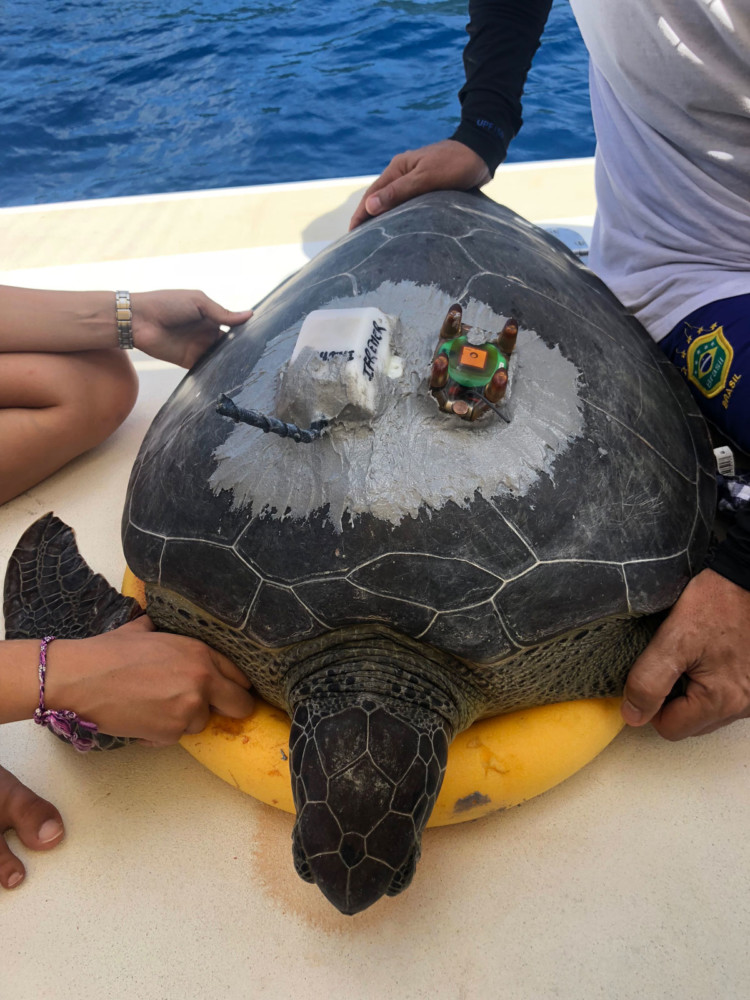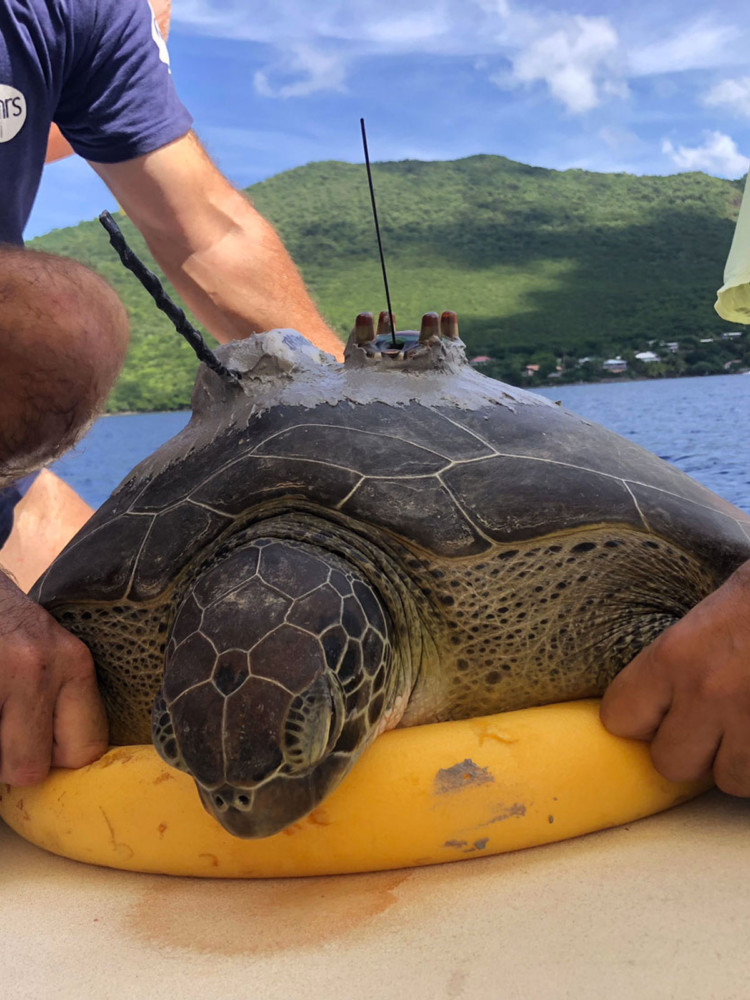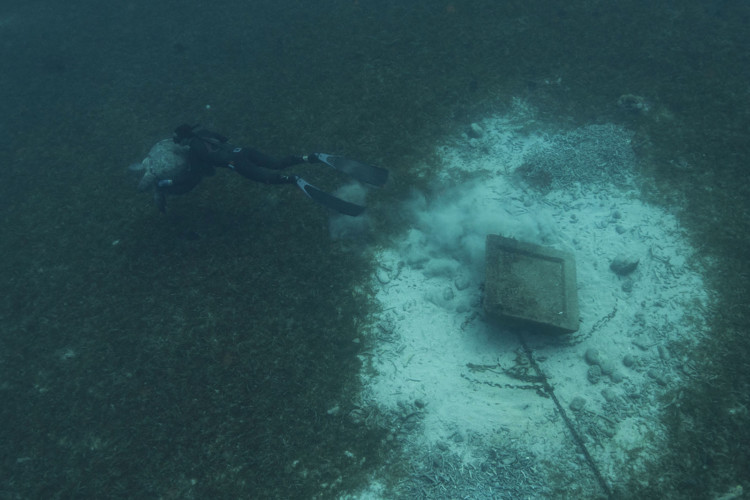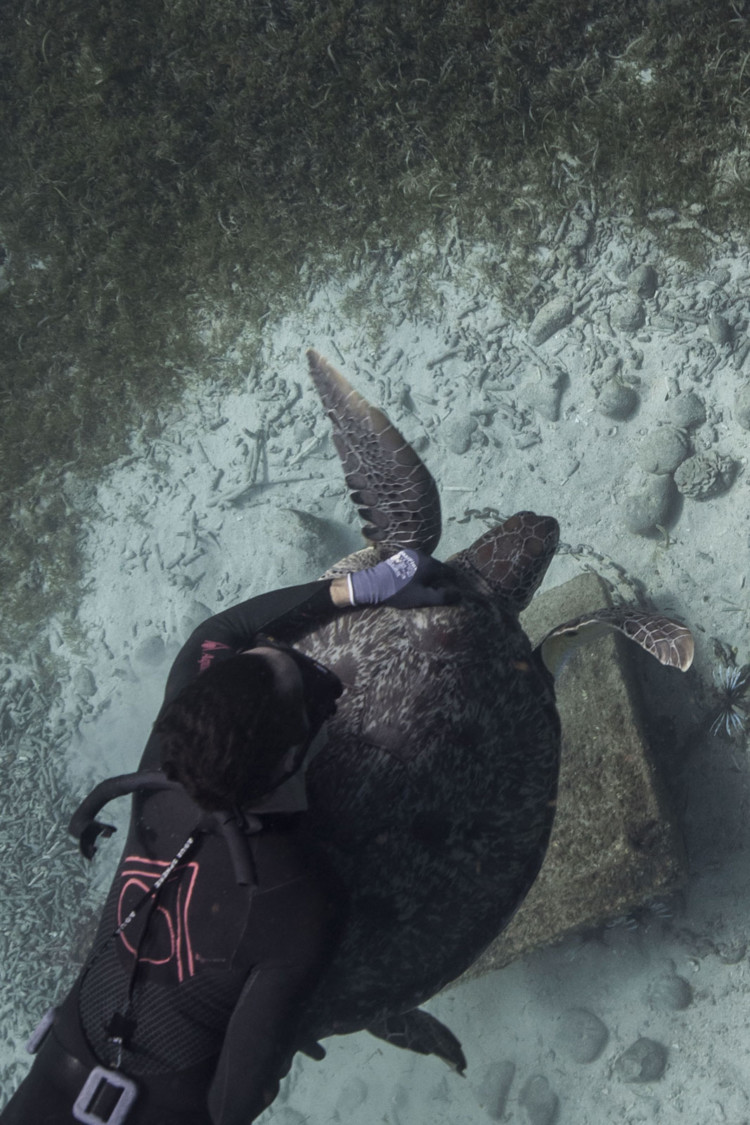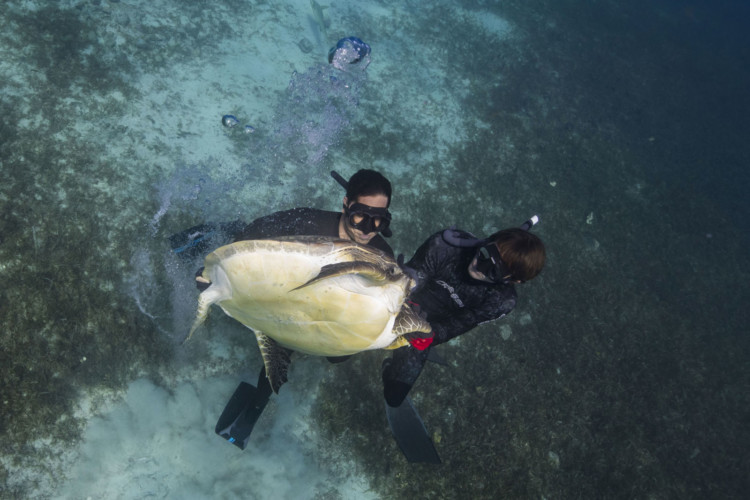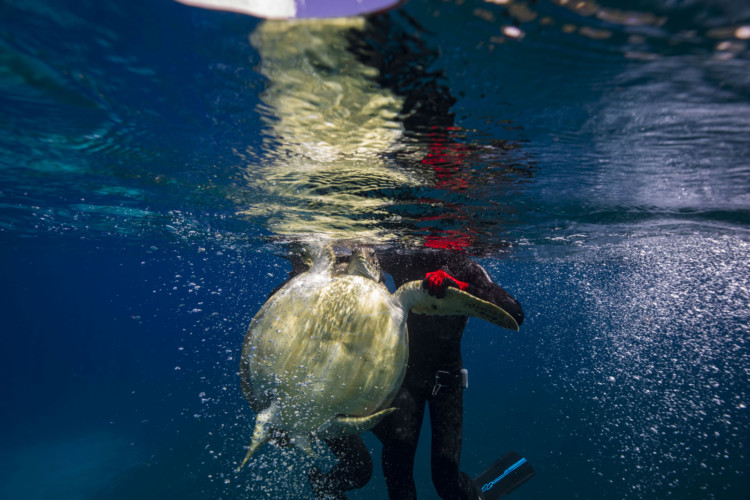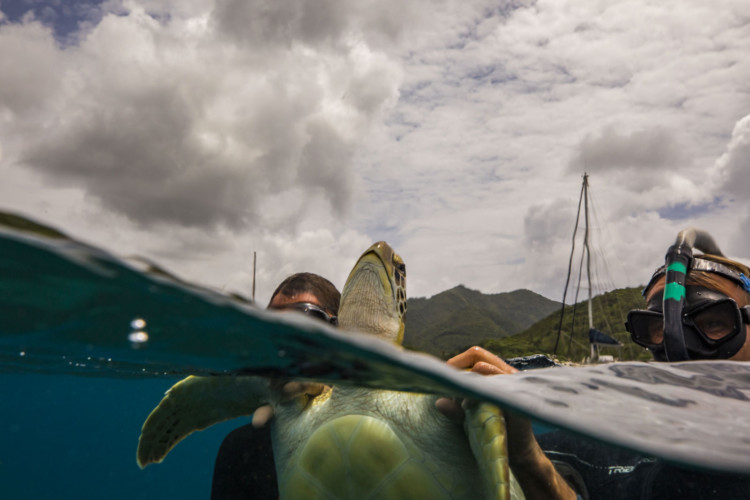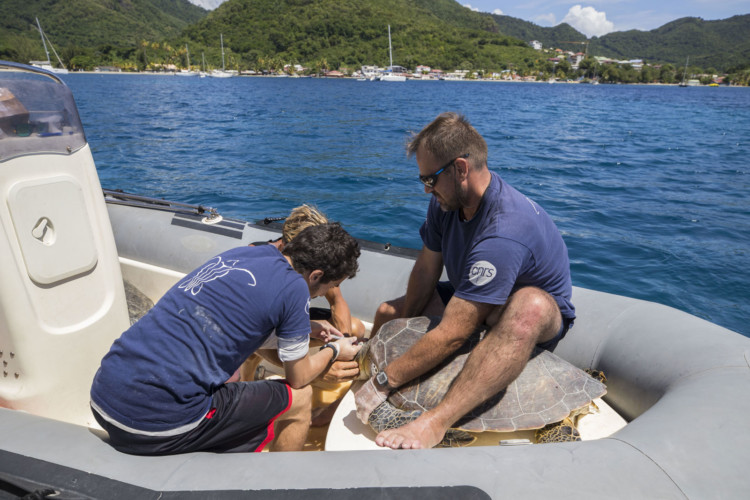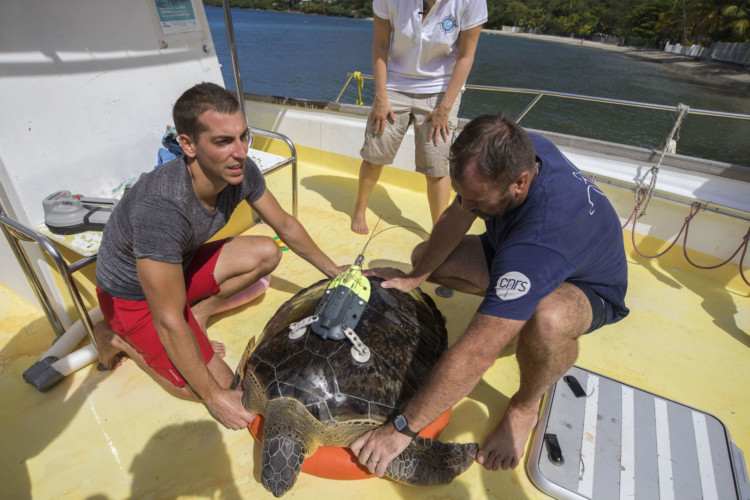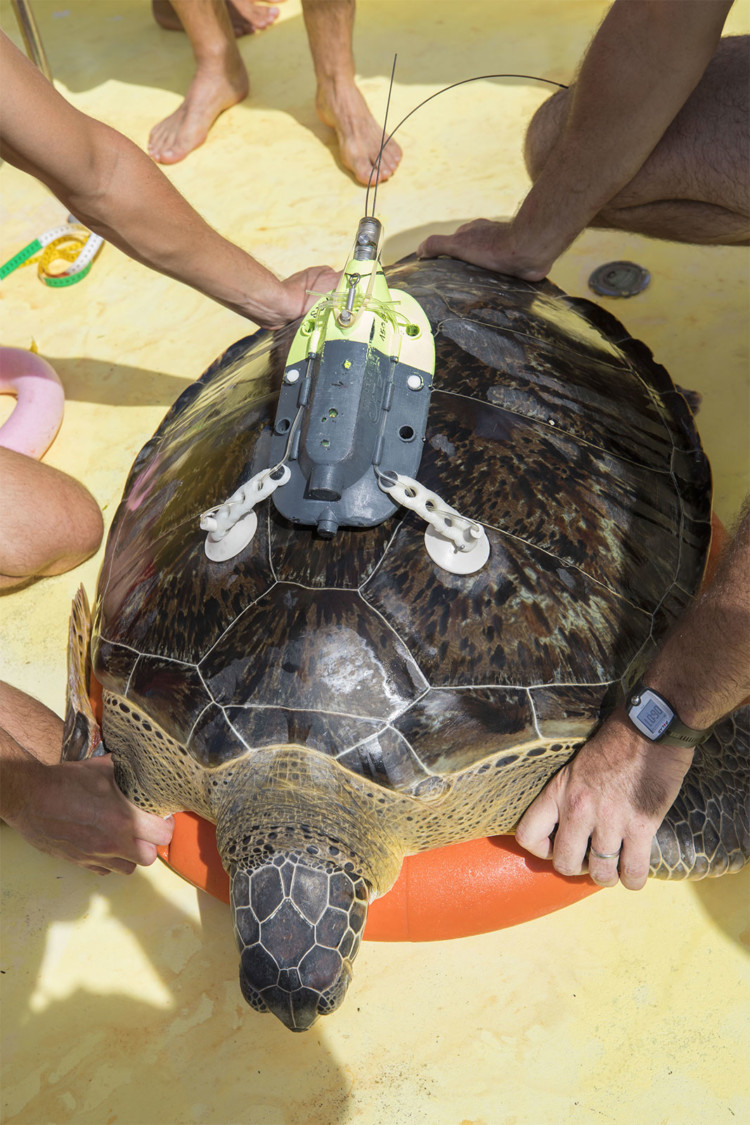We are in Colombia on the Caribbean coast as a continuation of the work done in Malpelo in March 2018. This work is in support of the Megafauna Consortium and Invemar. This is the team’s first time collecting eDNA samples in this area, and they hope to work toward classifying this region as a marine protected area.
Photo © O. Borde / Monaco Explorations
The teams from the Malpelo Mission have returned to Colombia but this time they are on the coast of the Caribbean Sea near Santa Marta, Colombia. This relatively unstudied area is an extension of the Sierra Nevada of Santa Marta National Natural Park.
The scientific teams on site are from UMR Marbec, which combines staff from IRD, Ifremer, UM and CNRS.
The research targets on this mission are to catch fish for species identification and eDNA (species identification through genetic coding), and record species and abundance via fixed cameras on the seafloor and baited cameras. The footage from the cameras is used to cross reference the data collected through water filtering for eDNA.
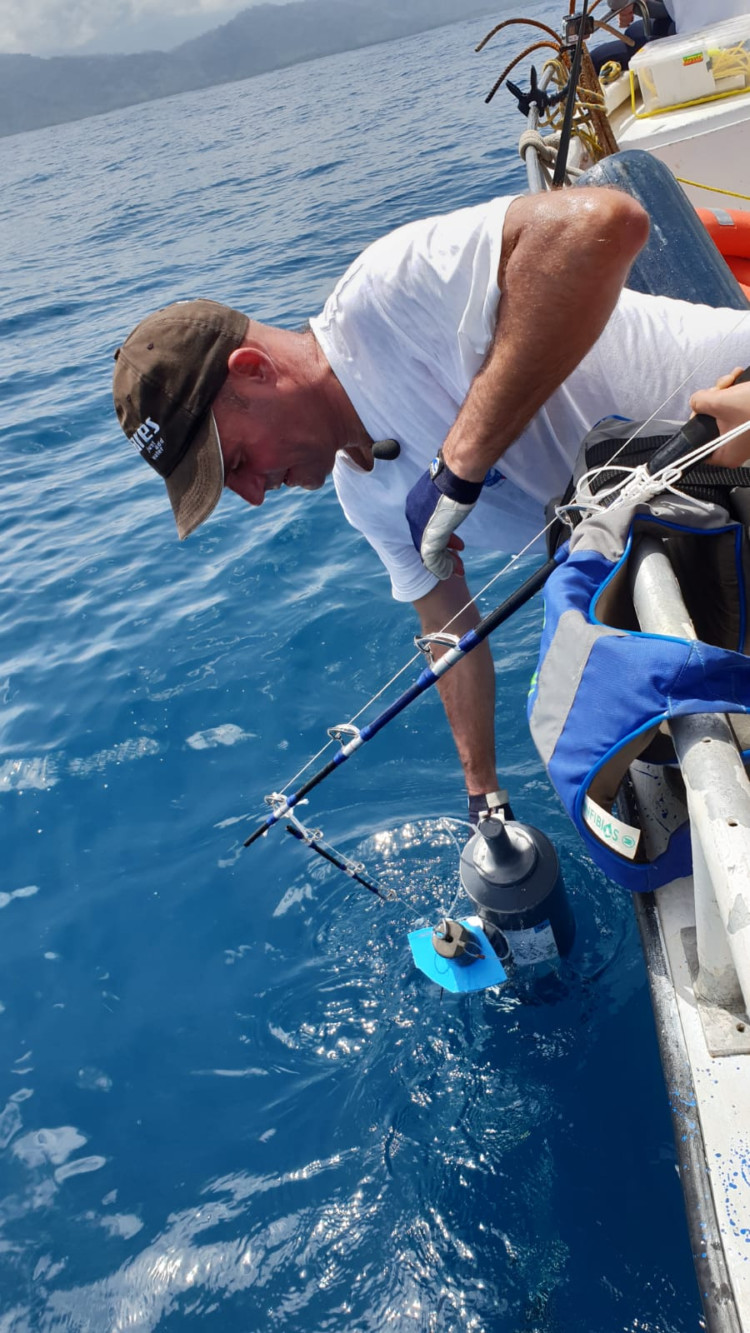
While on mission in Martinique, the divers saw a turtle that was suffering from a fishing hook stuck in her mouth. They have been able to capture her and bring her on board so that Damien Chevallier from CNRS and Philippe Brousse from Monaco Explorations could remove the hook.
While on mission in Martinique, the divers saw a turtle that was suffering from a fishing hook stuck in her mouth. They we able to capture her and bring her on board so that Damien Chevallier from CNRS and Philippe Brousse from Monaco Explorations could remove the hook.
IFREMER is “a French institute that undertakes research and expert assessments to advance knowledge on the oceans and their resources, monitor the marine environment and foster the sustainable development of maritime activities.”
Jerome Bourjea and Sylvain Bonhomeau, Research Biologists, and Pierre Gogendeau, Electonics Engineer, from Ifremer are here in Martinique testing technology on sea turtle tags.
Since the 1990s, the development of tags that record position has enabled scientists to better determine feeding and reproduction areas for marine species. Understanding these areas and habits is critical for conservation and management efforts. All sea turtle species are on the list of endangered species by the International Union for Conservation of Nature (IUCN) and for this reason specifically, a better understanding of their habitats and behaviors is critical. The current options for sea turtle tags are very expensive (around $4,000 per unit) and this means that the number of turtles that can be tracked is limited, which equals limited information and data.
Ifremer is on this mission in Martinique to test the LoRa technology, which is a wireless radio frequency technology, a long range, low power wireless platform that is used for ‘Internet of Things’ applications. Using tags with this technology equals about 1/8th of the cost of the current tags, which use very expensive and less detailed satellite technology. In testing the new LoRa technology, the Ifremer team sets antennas around the bay, and works on algorithms that allow the new tags to transmit to the antennas. The biggest challenge is to develop a tag that is long lasting and will not be damaged by the water.
On this mission, the team planned to deploy tags three days after arriving in Martinique. However, due to coding errors and bad weather, the first tag was deployed on day eight. Ifremer is working with CNRS because the CNRS team has the expertise of the local area and of capturing the turtles for tagging.
While here in Martinique, Ifremer was able to deploy three tags. One of these tags failed due to a coding error on the depth sensor, and the other two tags transmitted and produced very favorable results. Two turtles were equipped with both the current and the test tag for purposes of comparison, and one turtle was equipped with the new tag, which was attached to the 24-hour camera device that CNRS uses to gather information about the turtles. Attaching the tag to the self-releasing camera is ideal in this testing phase because it allows the researchers to retrieve the tag.
To read more from Ifremer Research Biologist Sylvain Bonhomeau on the topic of tag development and their use in the study of Green Sea Turtles, visit this document.
Photo credits: Liz Factor and Philippe Brousse
Sea turtles have lived on this planet for 110 million years. They live in every ocean from warm, tropical waters to the bitter cold waters of the Arctic. There are seven species of sea turtles, all of which are on the International Union for the Conservation of Nature (IUCN) Red List of Threatened Species.
Sea turtle populations around the world have been drastically reduced due to habitat degradation, pollution, by-catch, consumption of turtle meat and eggs, and the sale of sea turtle shells.
Healthy oceans need sea turtles. Sea turtles are a “keystone species”, which means they are an important part of their environment and influence other species around them. If a keystone species is removed from a habitat, the natural order can be disrupted, which impacts other wildlife and fauna in different ways. Sea turtles are also an important asset at the economic level because of they generate attraction to tourists. Despite all of this, knowledge about the ecology of sea turtles is still quite poor. For all of these reasons, it is crucial that we better understand how sea turtles use marine resources during their life cycle in order to develop and implement more effective protective measures and threat mitigation measures.
Sea turtles are among the most impressive navigators in the animal kingdom because they follow migratory routes that sometimes cross entire ocean basins. Most sea turtle species can migrate considerable distances between their feeding grounds and their breeding and nesting areas. With the exception of the breeding season, when females lay their eggs on nesting beaches, it is difficult to observe marine turtles in their marine environment, especially since it may be thousands of miles away. The sea is an incredibly diverse and complex habitat and this results in unequal production of resources in space and time, and therefore in their dispersion. Because of this, it is a major challenge between oceanography and ecology to identify the factors that determine the marine distribution of sea turtles and to understand their feeding strategy in response to changing oceanographic conditions and climate variability.
Until recently, knowledge about how different marine turtle species evolve and feed in their dynamic environment was still rudimentary. But the development of space technologies and the constant progress in microelectronics and computers make it more possible to understand how sea turtles optimize their movements according to the location of their breeding sites and their food resources.
In this context, because they evolve in distinct ecological niches, the study of the feeding behavior of different marine turtle species will provide an ideal opportunity to explore how oceanographic processes stimulate and shape the marine environment and their trophic resources, and therefore condition the distribution and movement of sea turtles. This approach is made possible by equipping the turtles with miniaturized sensors allowing the simultaneous acquisition of detailed information on feeding behavior and the close environment.
Photos © Monaco Explorations / Olivier Borde
[vc_row][vc_column][gem_divider margin_top=”25″][vc_column_text]David Mouillot is a Professor at the University of Montpellier (UMR MARBEC IRD-UM-CNRS-IFREMER).
What will you be researching, and why?
Our project will focus on marine megafauna (mainly large bony fishes, sharks and mammals) living close to reefs and seamounts. Megafauna is certainly the most vulnerable group of species to fishing activities and global changes with ¼ of species being under extinction threat. This urges unprecedented conservation efforts. These efforts cannot be efficient without a better knowledge of the biogeography and habitat use for most of these species. Yet, current data are mainly based on fisheries and local observations. A new protocol, non-destructive, non-intrusive, providing standardized information on all species, will allow us to identify the last refugia of marine megafauna, if any.[/vc_column_text][vc_column_text]
How will you carry this out technically?
Environmental DNA (eDNA) is genetic material originating from organisms that can be filtered from water samples. It comes from feces, mucus, blood, and sloughed cells, tissue, and in some cases can be attached to particles. We will collect eDNA close to reefs and seamounts using pumps and filters and then we will extract, amplify and sequence eDNA. Then, these sequences will be analysed to identify species present in the sampled seawater. In parallel, we will need to build a reference database to accurately identify species in eDNA by catching individuals and sequencing some parts of their genome.[/vc_column_text][gem_image position=”centered” src=”25882″][gem_image position=”centered” src=”25889″][vc_column_text]
How is the Monaco Explorations Campaign enabling your research?
Because of the opportunity with Monaco Explorations and the characteristics of the Yersin, we will be able to reach and sample isolated reefs and deep waters which are still largely unknown ecosystems for their megafauna. The Yersin will be the first platform “at sea” to analyse biodiversity in real time with dedicated laboratories and materials on board. Also, the ability to do sequencing of eDNA is extremely helpful as it is the most limiting factor in classical research projects.[/vc_column_text][gem_image position=”centered” src=”25881″][/vc_column][/vc_row]
